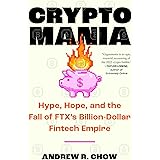Does the intricate world of advanced crypto derivatives captivate your interest? The visual demonstration provided in the video above outlines essential charting principles. These are foundational for those engaging in the complex arena of cryptocurrency futures trading. This guide expands on these visual cues, delving into the sophisticated mechanics and strategic considerations pertinent to this powerful financial instrument.
1. Demystifying Cryptocurrency Futures Contracts
A futures contract is an agreement. It facilitates the purchase or sale of an asset. This transaction occurs at a predetermined price. The settlement is scheduled for a specific future date. In the crypto domain, these assets are typically Bitcoin or Ethereum. Other major altcoins are also included. These derivatives allow speculation on future price movements. Physical asset ownership is not required. This distinction is crucial for understanding.
Perpetual futures contracts are a common variant. They possess no expiration date. This structure allows positions to be held indefinitely. Regular rollover is not needed. A funding rate mechanism ensures price alignment. This rate is exchanged between long and short positions. It depends on market demand. Such contracts are widely traded. Binance is a popular platform for them.
2. The Strategic Utilization of Leverage in Crypto Futures
Leverage is a powerful tool. It allows traders to control large positions. Only a small amount of capital is needed. This capital is known as margin. For instance, 50x leverage means $1,000 controls a $50,000 position. Profits can be amplified significantly. However, losses are also magnified. This risk must be thoroughly understood.
Initial margin is the deposit. It is required to open a position. Maintenance margin is the minimum. It must be held to keep the position open. If the account balance falls below this, a margin call is triggered. Further funds are requested. Failure to meet this results in liquidation. The position is automatically closed by the exchange. This prevents further losses to the exchange itself.
Imagine if $1,000 is used with 10x leverage. A $10,000 position is created. A mere 10% price drop results in a full loss. The entire initial margin is wiped out. Conversely, a 10% gain yields $1,000 profit. This doubles the initial capital. The inherent volatility of cryptocurrencies exacerbates these outcomes.
3. Essential Technical Analysis for Effective Futures Trading
The visual charting shown in the video is vital. It forms the backbone of technical analysis. This discipline involves studying past price action. Trading volumes are also examined. The goal is to predict future movements. Various indicators are employed for this.
Price action patterns are often analyzed. Support and resistance levels are identified. Trend lines provide direction. Candlestick patterns signal potential reversals. Moving Averages (MAs) smooth price data. They help identify trends. The Relative Strength Index (RSI) measures momentum. Overbought or oversold conditions are indicated. The Moving Average Convergence Divergence (MACD) identifies trend strength. It also signals potential shifts.
For cryptocurrency futures trading, understanding these tools is paramount. Imagine if a head and shoulders pattern appears on a Bitcoin futures chart. This typically signals a bearish reversal. A skilled trader might open a short position. Or, an existing long position might be closed.
4. Robust Risk Management in Volatile Futures Markets
Effective risk management is non-negotiable. The high leverage in futures markets necessitates it. A robust strategy protects capital. It mitigates potential for catastrophic losses.
Stop-loss orders are fundamental. They automatically close a position. This occurs when a predetermined price is reached. This limits potential downside. Take-profit orders secure gains. They close a position at a desired profit level. Position sizing is another critical element. Only a small percentage of total capital should be risked per trade. A 1-2% risk per trade is a common guideline.
Liquidation prices must be understood. Every leveraged position has one. It is the price point at which the exchange automatically closes the position. This prevents the trader’s balance from becoming negative. Maintaining sufficient margin is crucial. Avoiding over-leveraging is key. These practices are essential for longevity in cryptocurrency futures trading.
5. Advanced Strategies and Market Dynamics in Crypto Futures
Beyond basic concepts, several advanced dynamics influence futures. Understanding these provides a significant edge.
5.1. Funding Rates Analysis
Funding rates are periodic payments. They are exchanged between traders. This keeps the perpetual contract price close to the spot price. A positive funding rate means longs pay shorts. This suggests a bullish sentiment dominates. A negative rate indicates shorts pay longs. This often points to a bearish sentiment. These rates can be used as a sentiment indicator. They can also influence entry and exit decisions.
5.2. Open Interest and Volume
Open interest is the total number of outstanding contracts. These have not been closed or delivered. Rising open interest with rising prices indicates strong bullish conviction. Conversely, falling open interest with falling prices suggests shorts are closing. This could signal a potential bounce. Volume indicates market activity. High volume confirms trend strength. Divergences often signal exhaustion.
5.3. Arbitrage Opportunities
Price discrepancies can exist. They occur between futures and spot markets. Or, they are found between different exchanges. Traders can exploit these differences. This is known as arbitrage. For example, if a futures contract trades at a premium to its spot price. A trader could buy the spot asset. Simultaneously, a short futures position could be opened. This locks in the profit. These opportunities are often fleeting. Speed and advanced infrastructure are needed.
The landscape of cryptocurrency futures trading presents immense opportunities. It also carries substantial risks. A comprehensive understanding of its mechanics is paramount. Strategic risk management protects capital. Advanced technical analysis informs decisions. Constant learning and adaptation are fundamental for success in this dynamic market.







